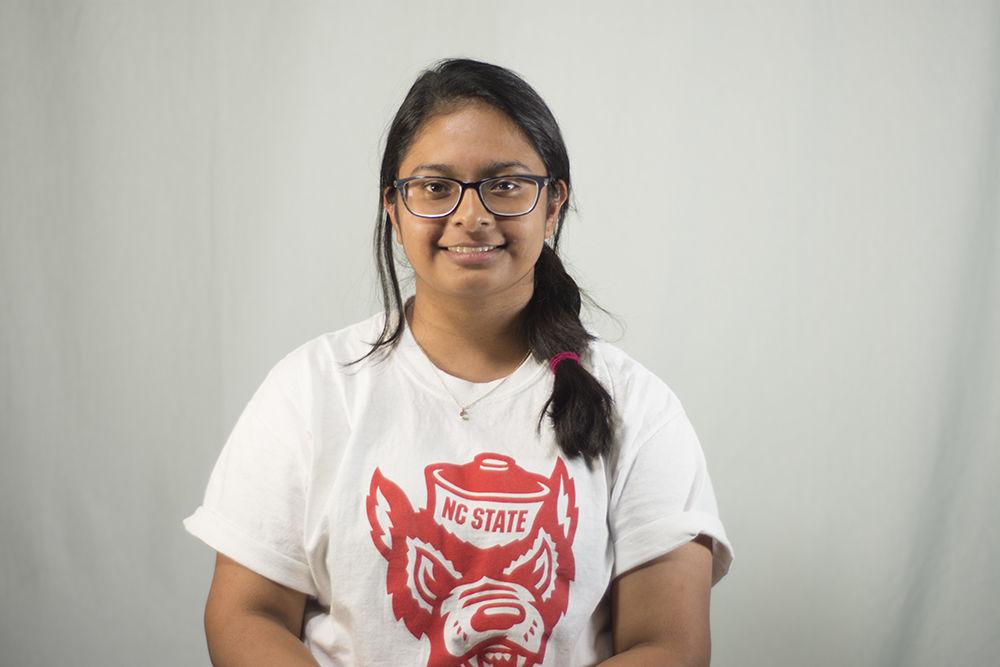Centennial Campus is often considered the gem of NC State, especially as State has a reputation for being a predominantly STEM school. Home to 75 university centers, institutes and departments, 76 industry, government and nonprofit partners, three distinct housing locations and the famous James B. Hunt Jr. Library, Centennial has a lot going right for it.
However, it only has three dining locations: On the Oval, the State Club Restaurant and the Terrace Dining Room. Of these three, two are simply infeasible options for students on distance alone. The State Club Restaurant is in the Park Alumni Center, and Terrace Dining Room is at Lonnie Poole Golf Course. Both are well out of a student’s way.
Perhaps while designing the Centennial Campus, the architects and designers assumed upperclassmen don’t eat out that much. Or they thought twenty-some-year-old college kids would be satisfied eating in just one food court with five restaurants throughout the year. Whatever the case may be, dining on Centennial is seriously limited.
Unfortunately, the problem doesn’t end with just a low quantity of dining options. The hours of operation of these locations are unconventional as well, increasing students’ inconvenience. On the Oval is open from 10:30 a.m. to 4 p.m., while the State Club Restaurant is open for lunch from 11 a.m. to 2 p.m. on weekdays. The only dining location open after 4 p.m. (minus the Gravity Cafe at On the Oval) is the Terrace Dining Room. This is in no way an accurate representation of the times students eat, nor does it follow the scientifically recommended times to eat.
According to a scientific statement released by the American Heart Association, breakfast is typically eaten between 5-9 a.m. and dinner is typically eaten between 6-9 p.m. With the Oval closing by 4 p.m., students have to find alternate sources to satisfy their hunger pangs.
Many cynics may argue that all the housing options on Centennial are apartments with kitchens, and so students should cook their own meals. While this is partially true, there are multiple fallacies to this argument.
Firstly, most of the students living on Centennial are upperclassmen with extremely heavy academic course loads. When forced to choose between grades, sleep and food, a number of them would skip meals if they have to cook every time they eat. It’s extremely important to have multiple dining options with flexible hours of operation to ensure every student is fed properly.
It is also well known that a number of college students spend most of their savings on eating out instead of preparing home-cooked meals. A standard meal for one person costs about $10-15, sometimes even more if they decide to splurge. By adding multiple and diverse dining options on campus, at least those students who have already purchased meal plans can save money by not eating off campus.
Secondly, a number of students, especially engineering majors, commute to Centennial Campus for classes held in the engineering buildings or to knock out a few hours of studying in the James B. Hunt Jr. Library. A significant number of these students live on Central Campus and have meal plans, so a lack of dining options that accept their plans on Centennial either forces them to lose money they have paid for dining hall access or commute back to main campus to eat.
Without adequate dining options, many students turn to the food trucks around Centennial Campus. There are still problems with this, though. For one, these trucks accept neither meal credits nor dining dollars, so many students with meal plans are forced to buy their lunches out of pocket. On top of this, these trucks have particularly tight schedules, only being on campus for two hours a day. The final nail in the coffin for this half-baked solution is their location, which is centered around Venture Place, quite a walk from the engineering buildings, Hunt Library or the Wolf Ridge apartments, which students are on the campus for in the first place.
In comparison to the multiple food courts and all-you-can-eat dining halls on Central Campus, Centennial falls significantly short of the mark. NC State should invest in increasing dining hall options on Centennial, similar to how it is maintained in Central Campus. There should be a good mix of dining halls, food courts, and smaller restaurants and cafes. In addition to expanding, officials should really consider changing the hours of operation for On the Oval to give students more flexibility when it comes to their meals.














